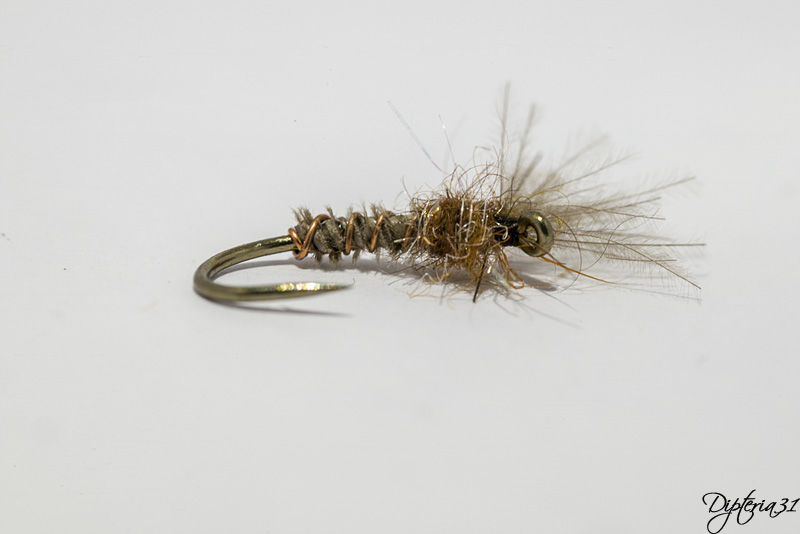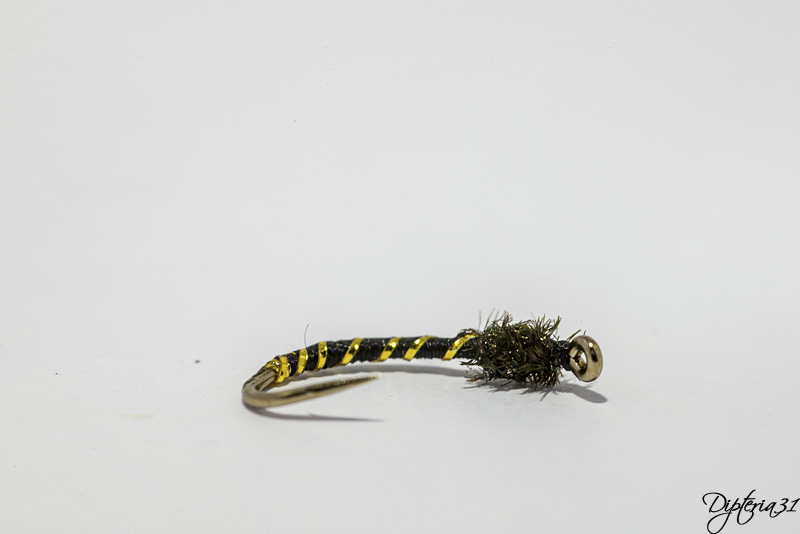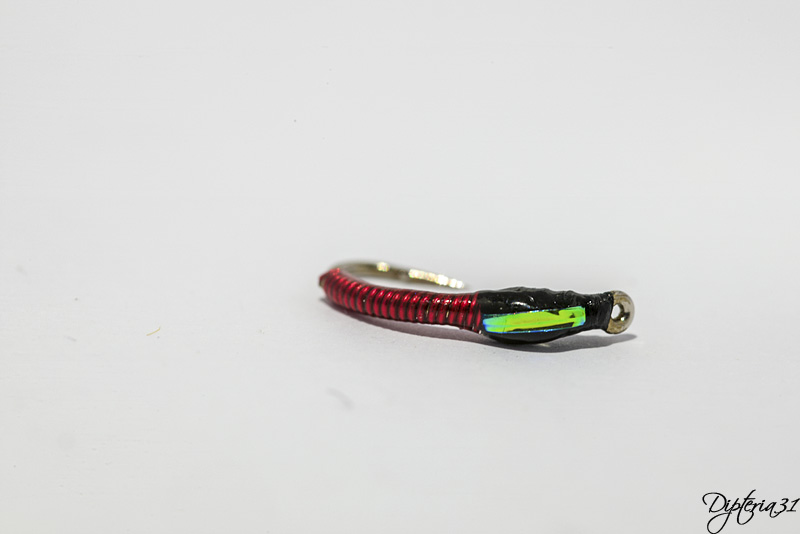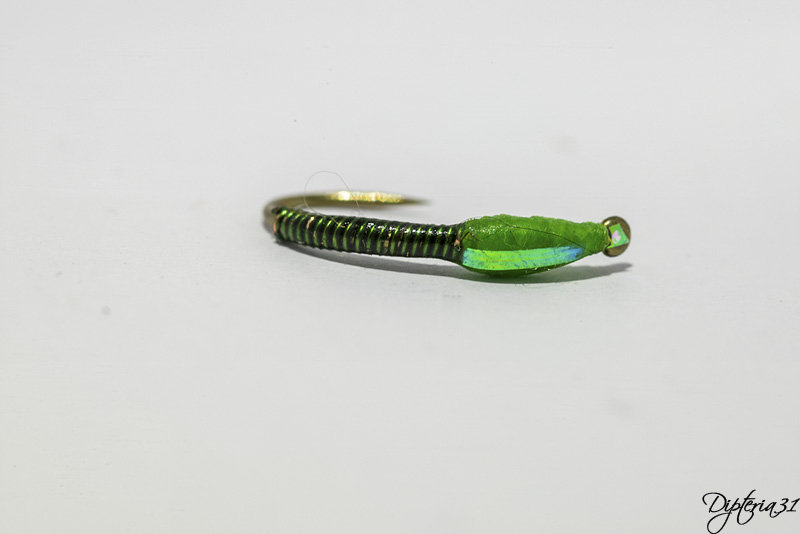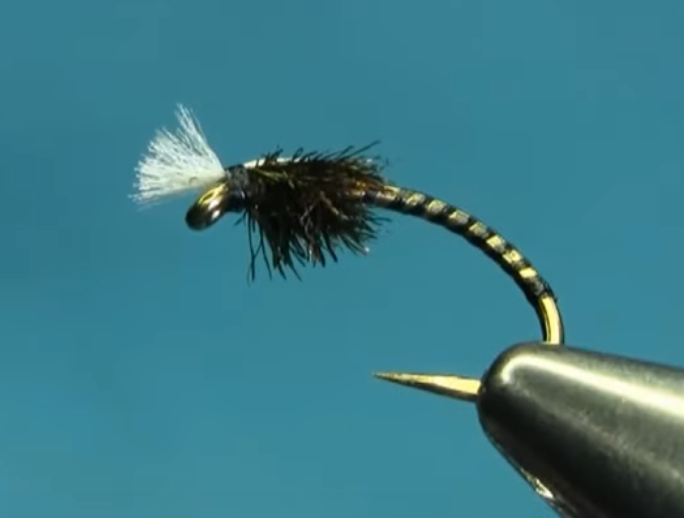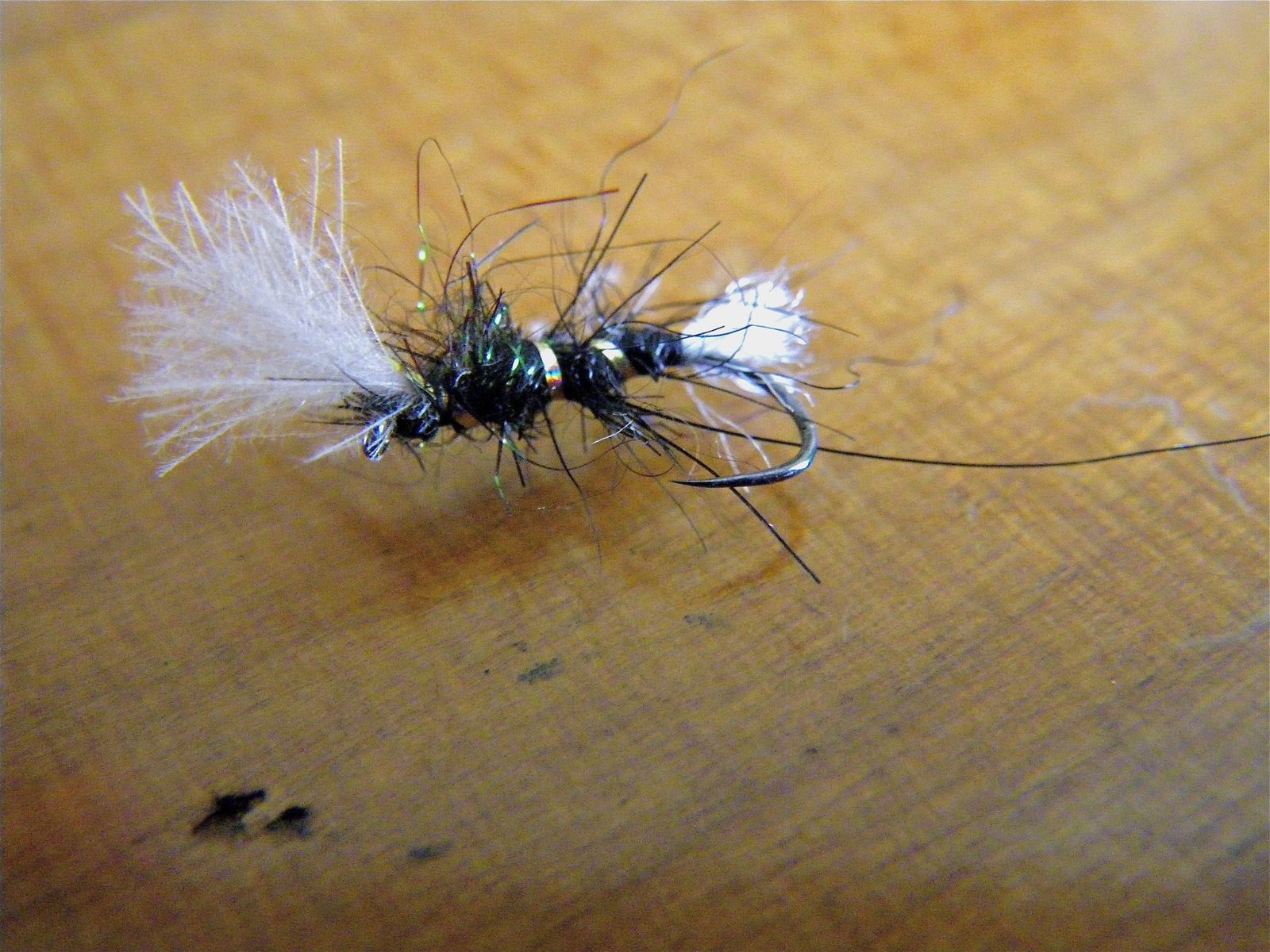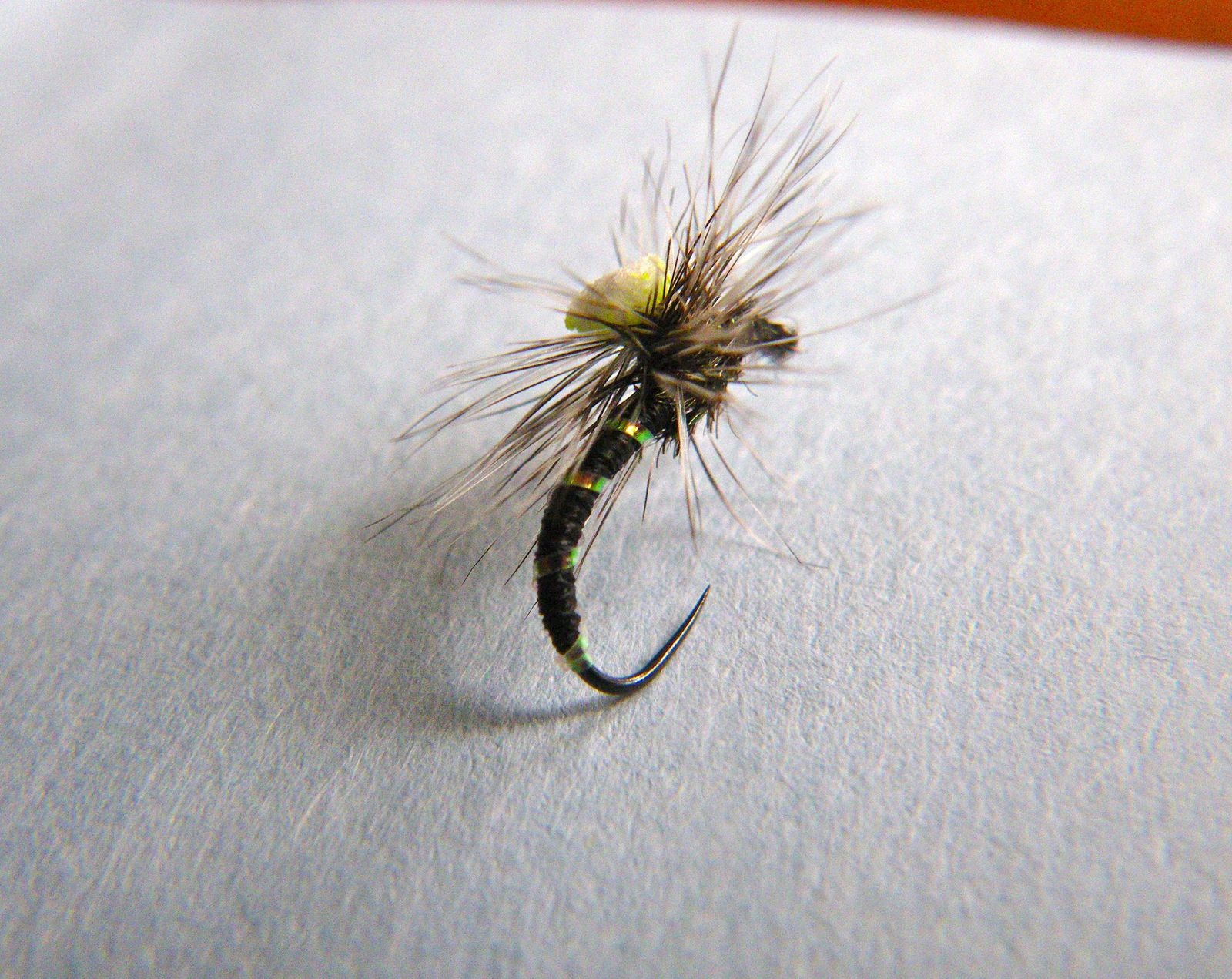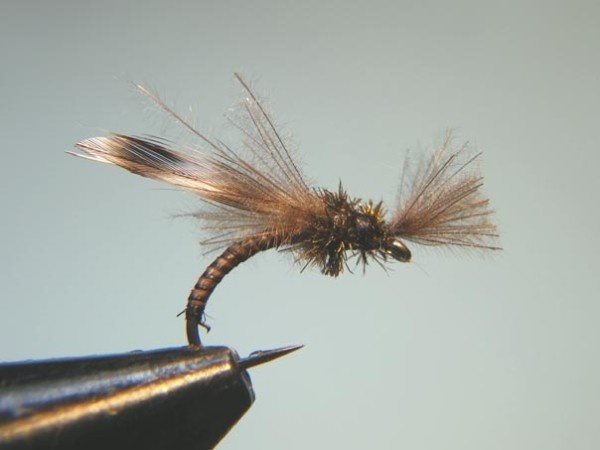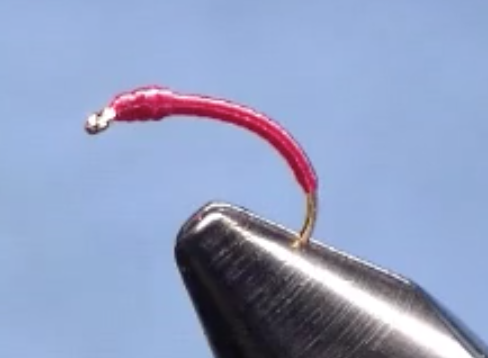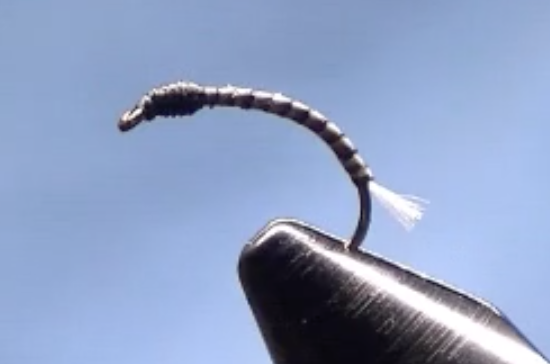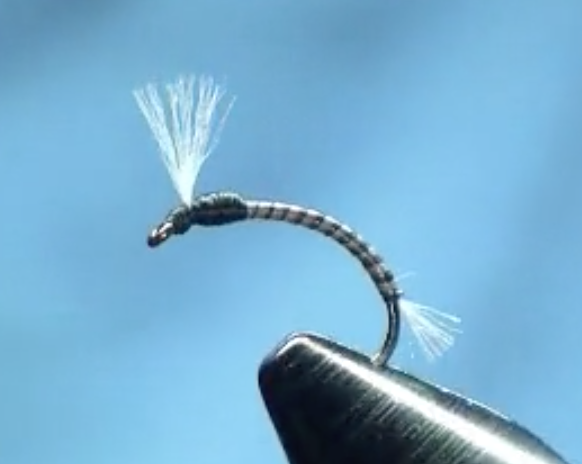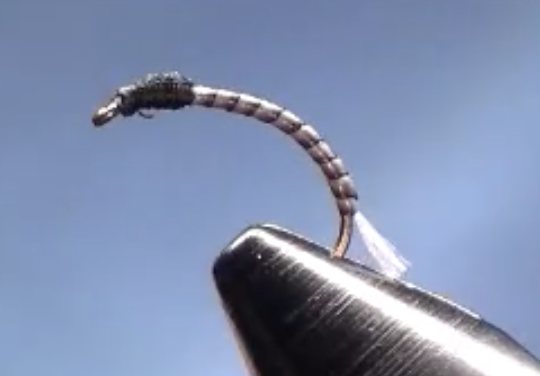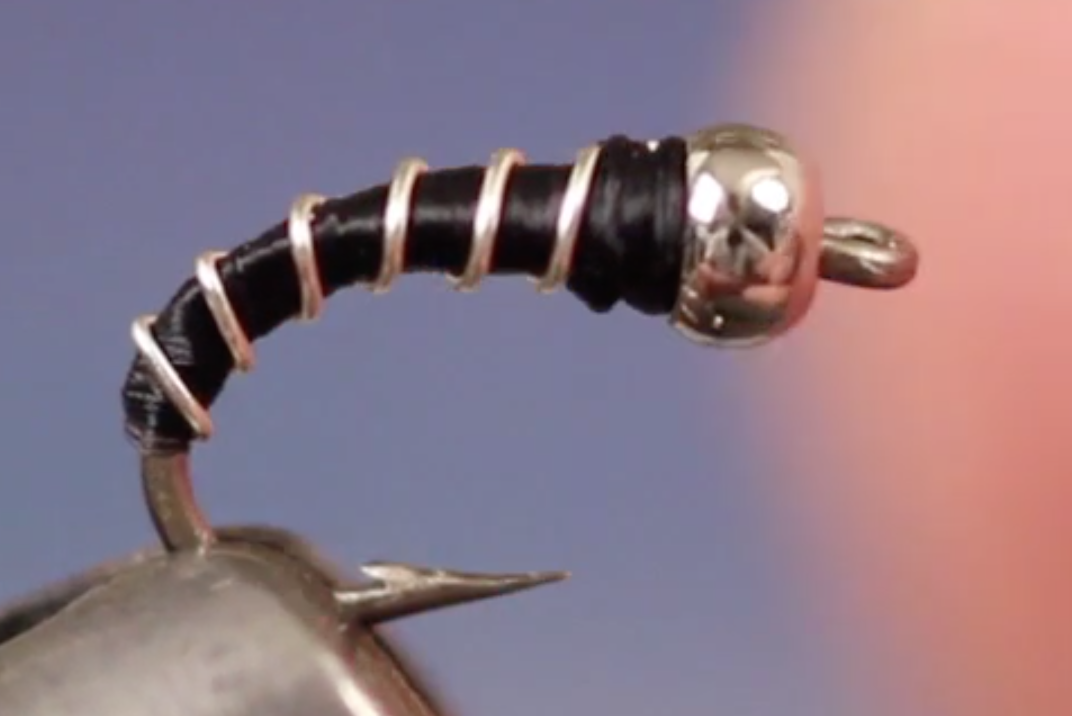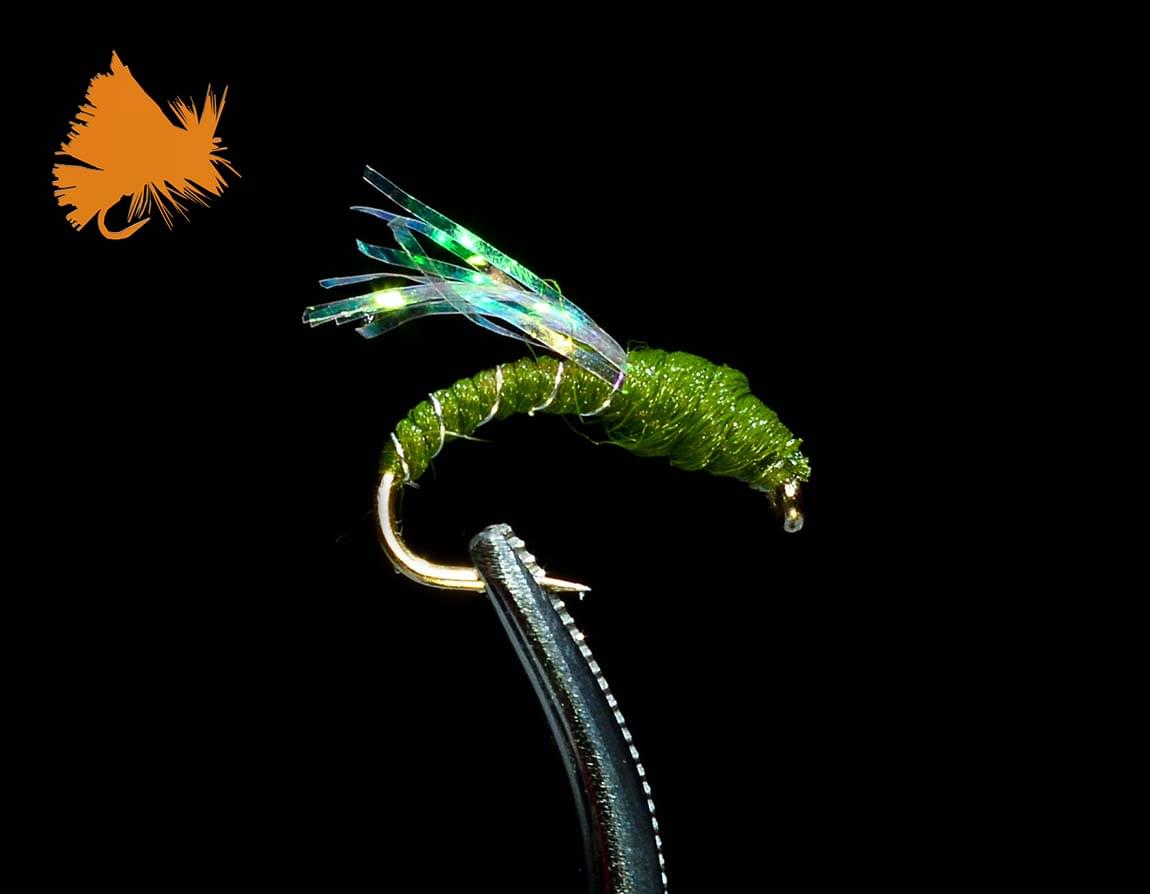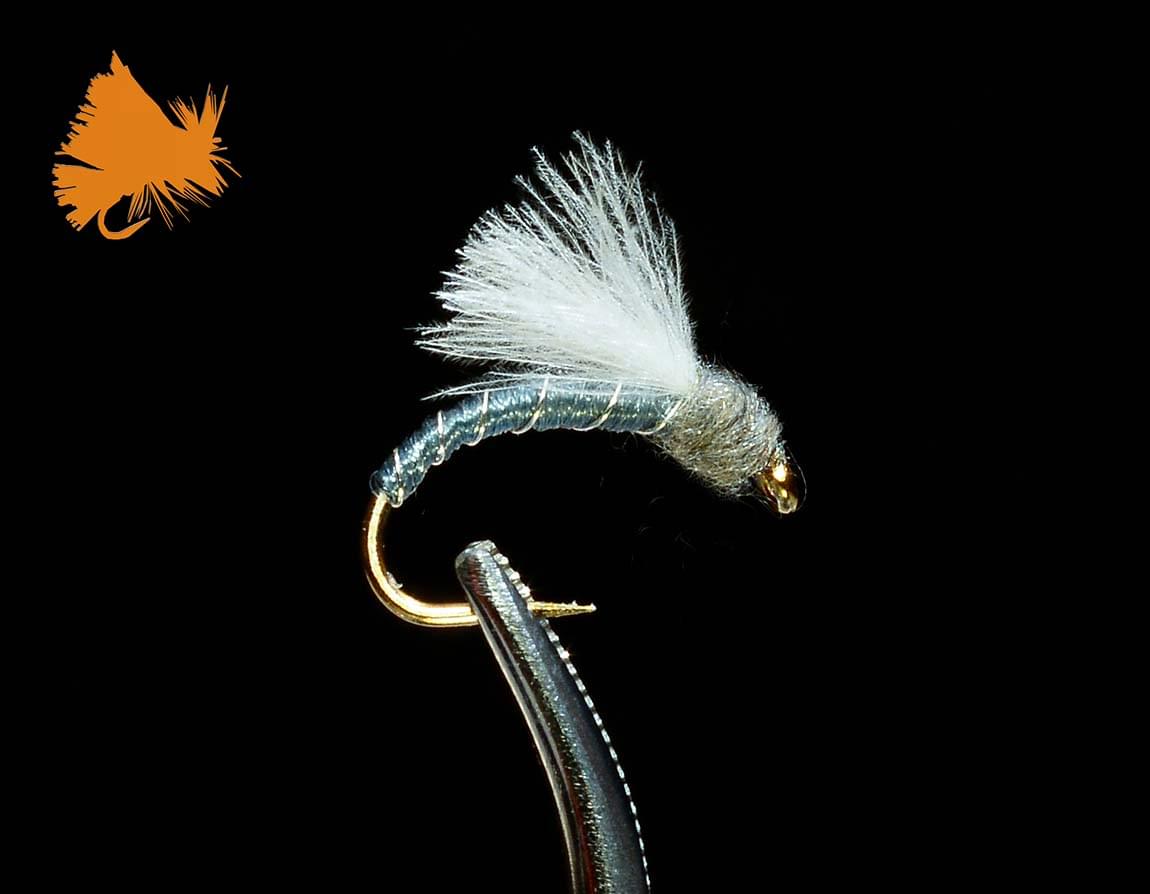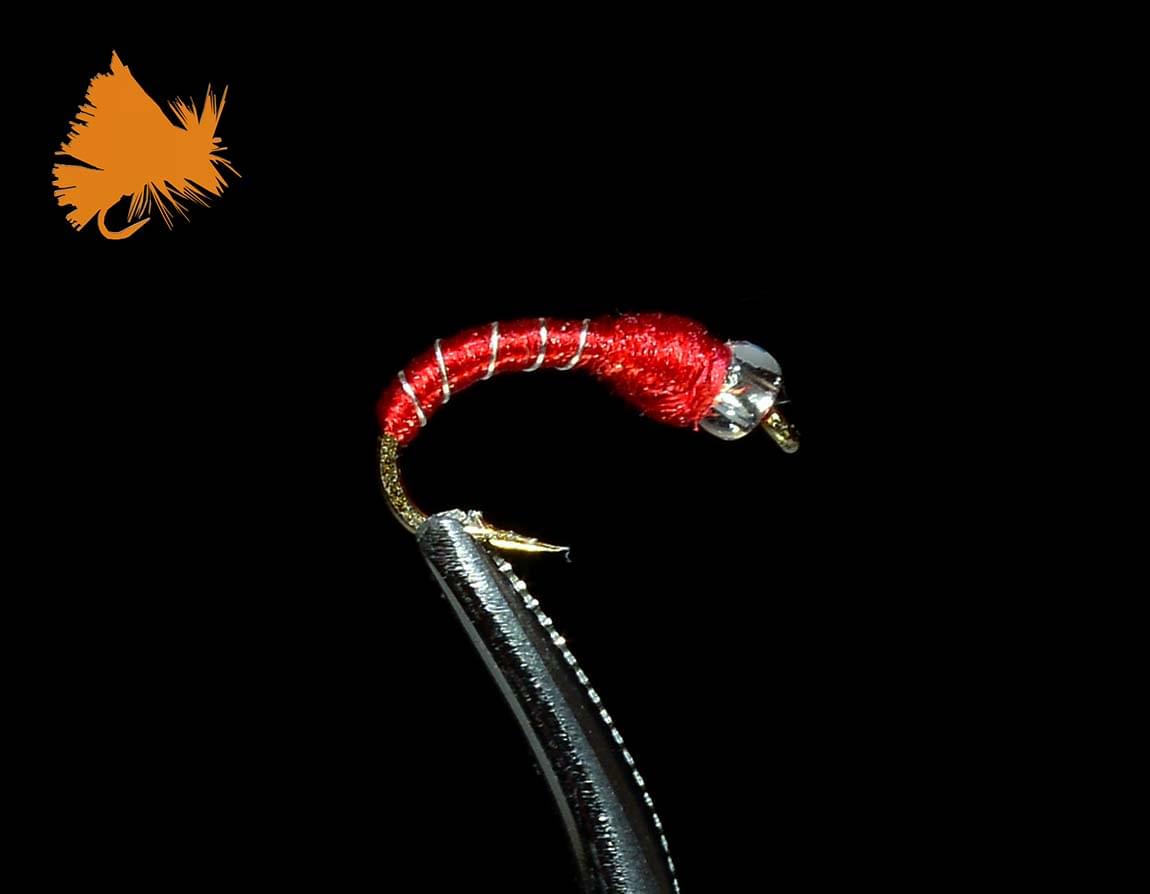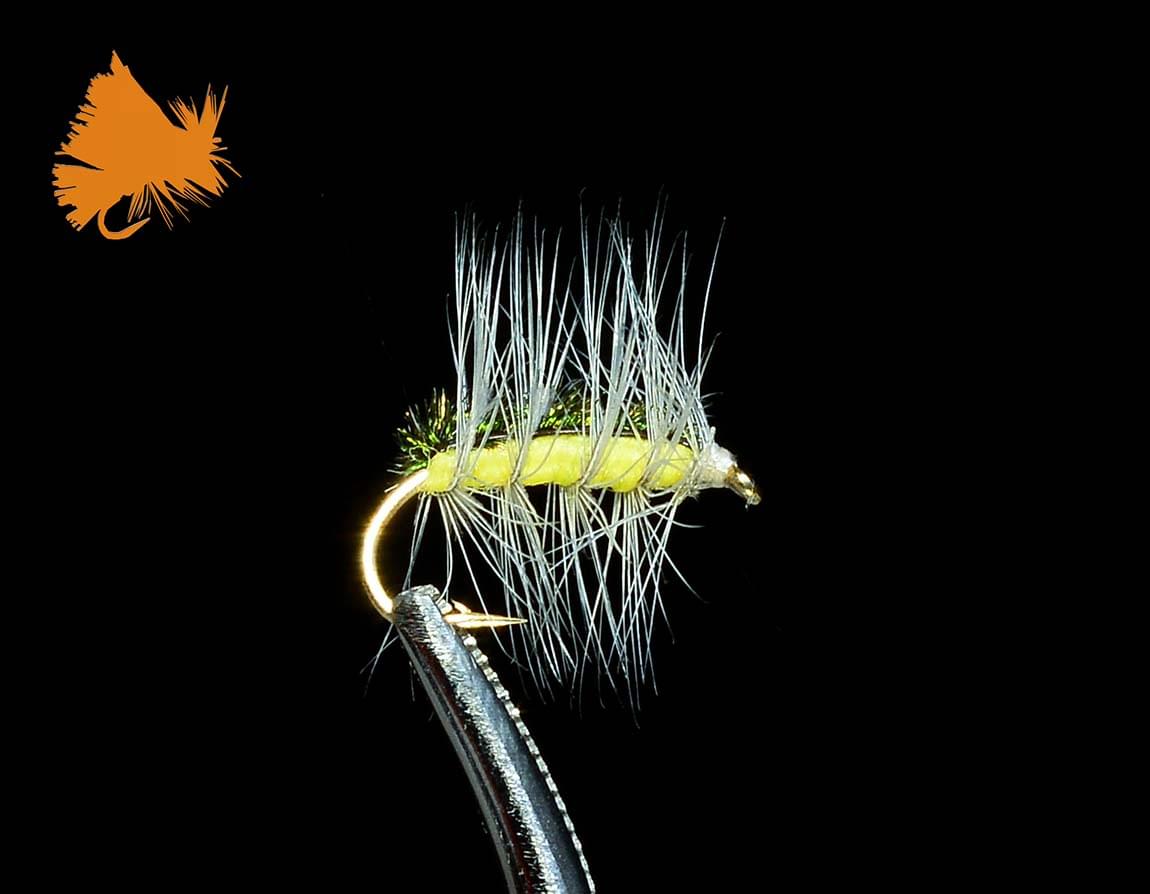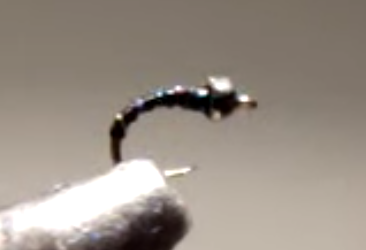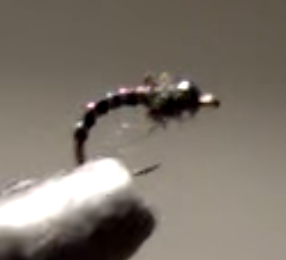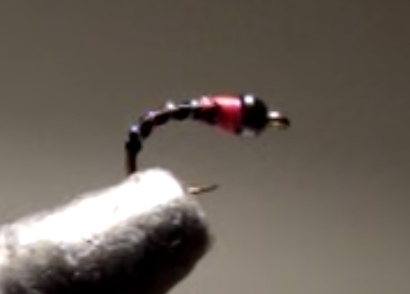Publié par Phil Monahan dde Orvis Fly Fishing
Matériaux:
Hook: 2X-short emerger hook (here a Dai-Riki #125), sizes 16-22.
Bead: Silver, 1/16”.
Thread: Black, 70 denier or 8/0.
Rib: Silver Ultra Wire, small.
Body: Black tying thread.
Note: Try different color beads, threads, and wires, as well.
Voir la video.
Notes de l’auteur: Tying the Zebra Midge
Author Phil MonahanPosted on October 12, 2011 Categories Fly Fishing
With cold weather approaching, many anglers will be focused on tailwaters where midges are an important part of a trout’s diet. The Zebra Midge, invented by Lees Ferry guide Ted Welling, imitates a tiny midge pupa, but you’ll be amazed by how such a tiny fly can attract large fish. In his book Tying and Fishing Tailwater Flies, Pat Dorsey describes how he uses the Zebra Midge when he needs a midge-pupa pattern that sinks quickly. Dorsey also likes to use the fly as a dropper below an attractor pattern, such as a San Juan Worm, egg, or stonefly. He says that fish are often attracted to the larger fly but then eat the Zebra Midge.
This video, by Tim Flagler of Tightline Productions, has all the elements that make Tighline’s step-by-step tying videos so popular here on OrvisNews.com: clear instructions by the narrator, pinpoint focus so you can see exactly what the tier is doing, and a few of tricks that will make you a better tier. Because he has tied these patterns so many times, Tim has developed ways of making the process easier. Here, you’ll learn how to spin the bobbin to create a smoother thread underbody, how to wrap rearward in stages to create a more tapered body, and how to “helicopter” the wire rib for a clean break. Traduction souhaitée?
Noter que pour une meilleure consolidation en principe les enroulements de tinsel, des fils métalliques ou de cuivre, se font dans le sens opposé des enroulements du fil de montage, ce qui n'est pas le cas ici.

